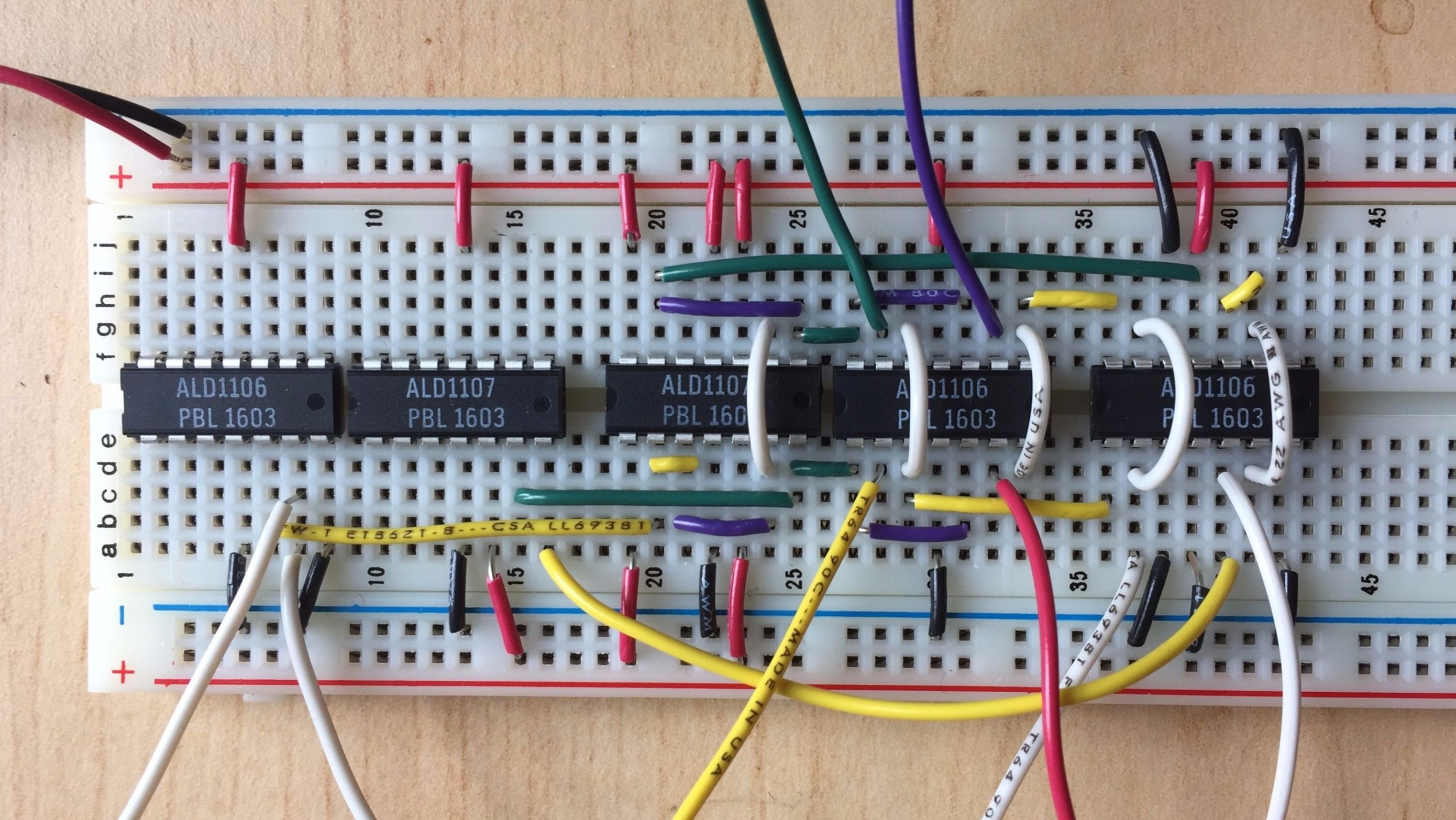Differential Difference Amplifier
For a class final project I worked with a partner to build and measure as well as simulate three differential difference amplifiers. nMOS and pMOS transistors were breadboarded to collect data, and LTspice was used to simulate. We evaluated each circuit’s incremental output resistance, differential mode voltage gain, and incremental transconductance gain.

The goal of the lab was to characterize and study the differences between three different versions of the differential difference amplifier (DDA). To do so, the three circuits below were built and measured using a custom source-measure unit and then also simulated in LTspice XVII.

Experiments
In order to compare the circuits to one another as well as to compare the built circuits to the simulated circuits, we performed the same five experiments for each circuit.
Experiment 1
In experiment 1 we evaluated the voltage transfer characteristic of an inverting and noninverting input by setting three inputs but one to a constant voltage and sweeping the fourth input voltage while measuring output voltage.
The measurements from expreiment 4 allowed us to directly measure the incremental transconductance gain of the DDA. However, in experiments 2 and 3 we measured the differential mode gain and incremental output resistance, which can be used to calculate the incremental transconductance gain. In the conclusion of our lab report, we compared the differences in these values, as well as the values obtained from LTspice simulations.